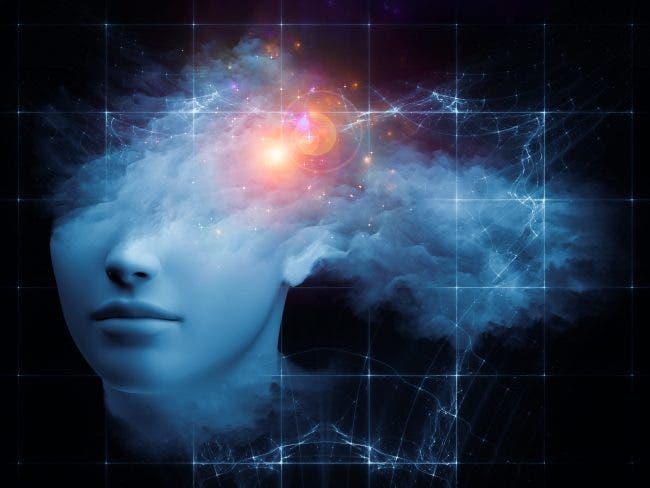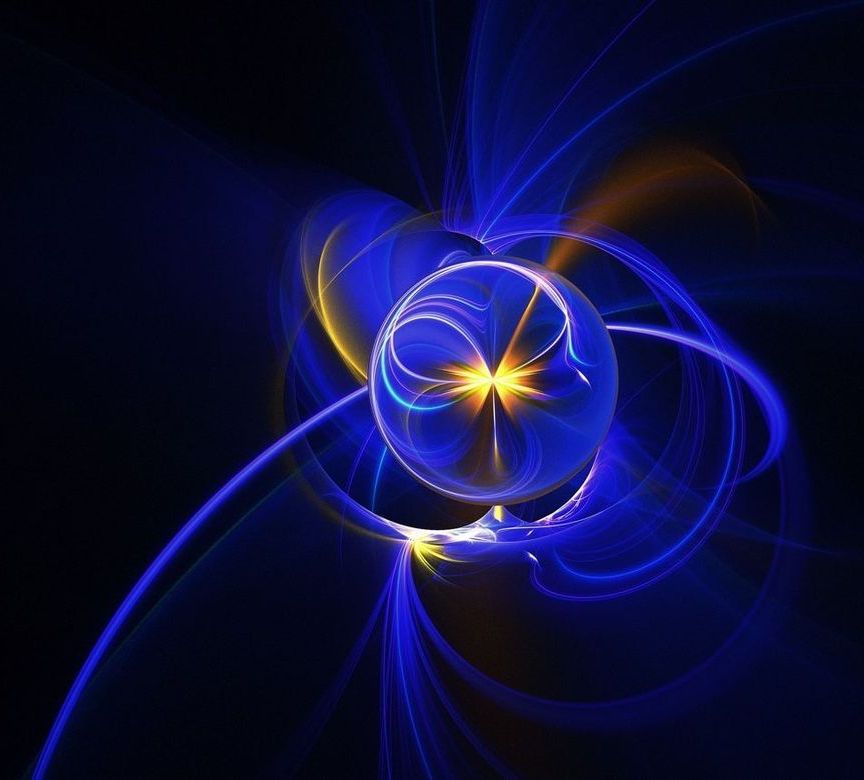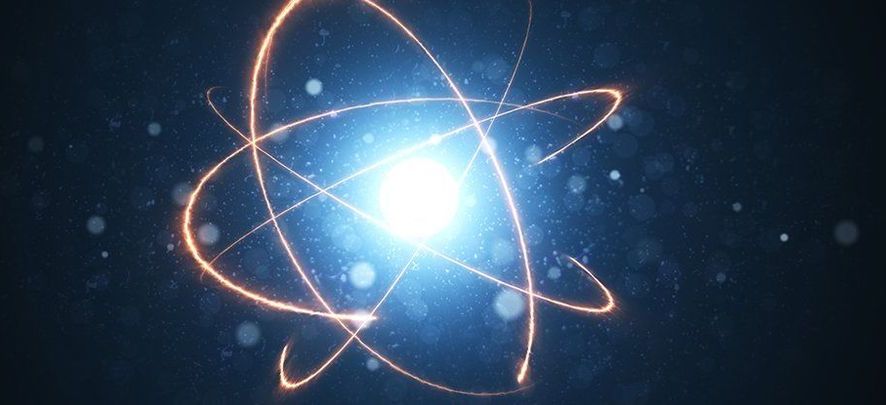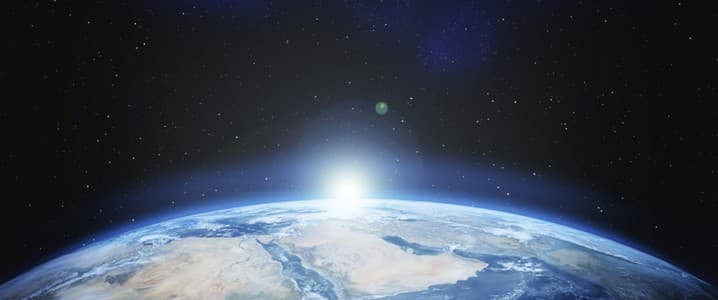Researchers have confirmed rumors of a black hole collision that challenges our ideas about how black holes form.



Does human consciousness exist separate from matter, or is it embodied in the body –a critical player in anything that has to do with mind? “We are not thinking machines that feel; rather, we are feeling machines that think.” answers neuroscientist Antonio Damasio, who pioneered the field of embodied consciousness –the bodily origins of our sense of self. “We may smile and the dog may wag the tail, but in essence,” he says. “we have a set program and those programs are similar across individuals in the species. There is no such thing as a disembodied mind.”
Consciousness is considered by leading scientists as the central unsolved mystery of the 21st Century: “I have a much easier time imagining how we understand the Big Bang than I have imagining how we can understand consciousness,” says Edward Witten, theoretical physicist at the Institute for Advanced Study in Princeton, New Jersey who has been compared to Isaac Newton and Einstein about the phenomena that has been described as assuming the role spacetime did before Einstein invented his theory of relativity.
Some scientists have asked how can we be sure that the source of consciousness lies within our bodies at all? One popular, if mystical, idea, writes astrophysicist Paul Davies in The Demon in the Machine, “is that flashes of mathematical inspiration can occur by the mathematician’s mind somehow ‘breaking through’ into a Platonic realm of mathematical forms and relationships that not only lies beyond the brain but beyond space and time altogether.”
Ira Pastor, ideaXme life sciences ambassador and founder of Bioquark interviews Dr Vitaly Vanchurin, PhD, Associate Professor, Theoretical Physics and Cosmology, Swenson College of Science and Engineering, at the University of Minnesota (UMN).
Dr Vanchurin’s big questions and the tools we need to answer them:
“What is the origin of our Universe? What determines our vacuum and the cosmological constant that is responsible for the observed accelerated expansion of space? What determines the onset of structure formation and the birth of galaxies in our Universe? Our innate curiosity about our beginnings has been, since time immemorial, and still is, at the heart of every human being. This age old question of our origin can now be addressed by applying the scientific method”.
Ira Pastor comments:
Today, we have a really exciting thought leader joining us on ideaXme who spends his time thinking about really BIG questions – Questions like: what is the origin of our Universe? What’s behind the cosmological constant (in Albert Einstein’s field equations of general relativity) that is responsible accelerated expansion of space? What determines the onset of structure formation and the birth of galaxies in our Universe? And many other fascinating topics.
Dr. Vitaly Vanchurin, is an Associate Professor, Theoretical Physics and Cosmology, Swenson College of Science and Engineering, at the University of Minnesota (UMN).

It prevents galaxies from flying apart.
Two experiments hunting for a whisper of a particle that prevents whole galaxies from flying apart recently published some contradictory results. One came up empty handed, while the other gives us every reason to keep on searching.
Dark bosons are dark matter candidates based on force-carrying particles that don’t really pack much force.
Resting on the tail of the Great Bear in the constellation of Ursa Major, lies NGC 5585, a spiral galaxy that is more than it appears.
The many stars, and dust and gas clouds that make up NGC 5585, shown here in this Hubble image, contribute only a small fraction of the total mass of the galaxy. As in many galaxies, this discrepancy can be explained by the abundant yet seemingly invisible presence of dark matter.
The stellar disc of the galaxy extends over 35,000 light-years across. When compared with galaxies of a similar shape and size, NGC 5585 stands out by having a notably different composition: Contributing to the total mass of the galaxy, it contains a far higher proportion of dark matter.
We recently observed the strongest magnetic field ever recorded in the Universe. The record-breaking field was discovered at the surface of a neutron star called GRO J1008-57 with a magnetic field strength of approximately 1 BILLION Tesla. For comparison, the Earth’s magnetic field clocks in at about 1/20,000 of a Tesla – tens of trillions of times weaker than you’d experience on this neutron star…and that is a good thing for your general health and wellbeing.
Neutron stars are the “dead cores” of once massive stars which have ended their lives as supernova. These stars exhausted their supply of hydrogen fuel in their core and a power balance between the internal energy of the star surging outward, and the star’s own massive gravity crushing inward, is cataclysmically unbalanced – gravity wins. The star collapses in on itself. The outer layers fall onto the core crushing it into the densest object we know of in the Universe – a neutron star. Even atoms are crushed. Negatively charged electrons are forced into the atomic nuclei meeting their positive proton counterparts creating more neutrons. When the core can be crushed no further, the outer remaining material of the star rebounds back into space in a massive explosion – a supernova.

Two experiments hunting for a whisper of a particle that prevents whole galaxies from flying apart recently published some contradictory results. One came up empty handed, while the other gives us every reason to keep on searching.
Dark bosons are dark matter candidates based on force-carrying particles that don’t really pack much force.
Unlike the bosons we’re more familiar with, such as the photons that bind molecules and the gluons that hold atomic nuclei together, an exchange of dark bosons would barely affect their immediate surroundings.

A new D-Theory of Time, or Digital Presentism, is predicated on reversible quantum computing at large, including the notion of ‘Anti-Time’ around which the present article revolves. If you think Anti-Time is nothing but fiction, and doesn’t apply to our reality, think again. As Dr. Antonin Tuynman writes in his Foreword to The Physics of Time: D-Theory of Time & Temporal Mechanics by Alex M. Vikoulov: “Whereas quantum physics and relativity theory have been solidly in place for over a century now, stubbornly and forcedly we still cling to atavistic interpretations, which are no longer in line with the well-established findings of our experiments in physics. Amidst the turmoil of this spinning convoluted dreamtime of our digital Cyberbardo, Vikoulov carves out a trajectory for understanding.”
#AntiTime #PhysicsofTime #DTheoryofTime #DigitalPresentism #TemporalMechanics
Many temporal concepts are undoubtedly extremely counterintuitive. Time directionality and time symmetry are especially notorious ones. Any of the possible pasts may have led to the present “digital” conscious instant. This is a strange idea if you are accustomed to looking at the world in a strictly linear, deterministic way, but it reflects the uncertain world described by quantum mechanics. A major counterargument to the multitude of pasts could be a combinatorial explosion of observer ‘anti-time’-lines, i.e., digital timelines extending in the opposite temporal direction from the present temporal singularity to the Alpha Point (Digital Big Bang). So, how in the quantum multiverse are those digital anti-timelines supposed to converge once again at the Alpha Point?
The answer has to do with reversible entropy (not observable, of course, in the Newtonian classicality). Reversing information entropy is like going from higher complexity to lower complexity. As long as you continue to unwind the complexity bit-by-bit, you’ll end up at the point of the lowest possible complexity with, perhaps, 1 bit of entropy — the Alpha Point — the convergent point of all anti-timelines and simultaneously the point of origin of all observer probable timelines.
All theoretical roads lead to the physics of information, otherwise known as Digital Physics. Researchers suspect that ultimately the axioms of quantum theory will be about information: what can and can’t be done with it. One such derivation of quantum theory based on axioms about information was proposed in 2010. “Loosely speaking,” explained Jacques Pienaar, a theoretical physicist at the University of Vienna, “… principles state that information should be localized in space and time, that systems should be able to encode information about each other, and that every process should in principle be reversible, so that information is conserved.”


While the future of the clean energy proposal remains uncertain, the majority of Americans have been reading from the same page regarding what needs to be done: Dramatically cutting down the country’s reliance on fossil fuels over the next two decades is critical to lowering greenhouse gas (GHG) emissions and address climate change, with six in 10 U.S. adults saying they would favor policies with this energy goal. Thankfully, scientists have been researching alternative energy solutions like wind and solar power for decades, including lesser-known sources that may seem a little unusual or even downright ridiculous and unrealistic.
You can chalk up harvesting energy from blackholes to the latter category.
Fifty years ago, British mathematical physicist, Roger Penrose, proposed a seemingly absurd idea how an alien society (or future humans) could harvest energy from a rotating black hole by dropping an object just outside its sphere of influence also known as the ergosphere where it could gain negative energy. Since then, nobody has been able to verify the viability of this seemingly bizarre idea— that is until now.